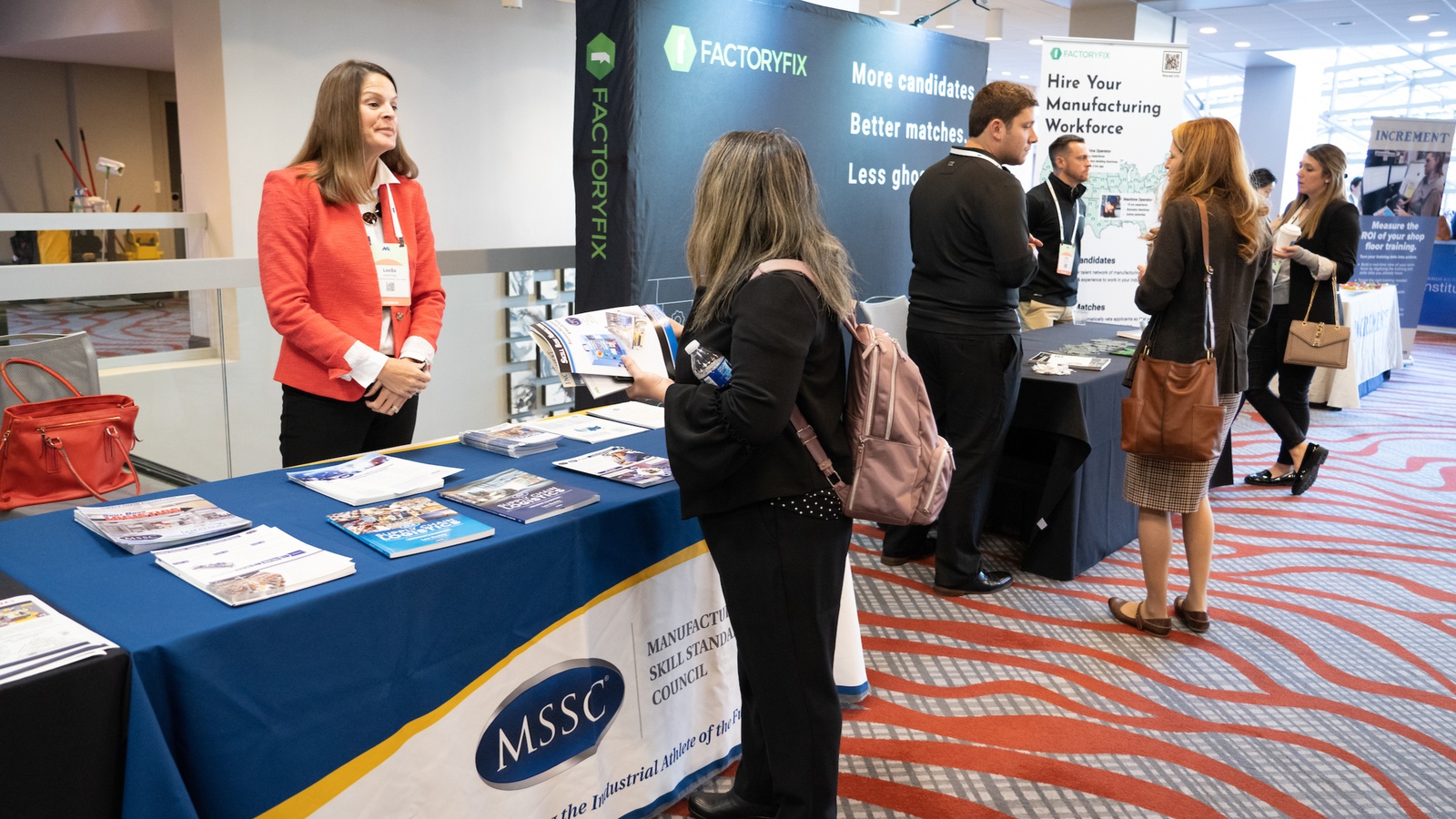MI Summit Advances Workforce Solutions

Last year, The Manufacturing Institute—the workforce development and education partner of the NAM—came to a realization: There were manufacturing conferences and there were workforce conferences, but neither addressed manufacturing-workforce challenges from a broad, national perspective. The MI wanted to change that.
And it did, just this month—with the inaugural, now-annual, MI Workforce Summit.
What it is: The summit, held this month in Cincinnati, Ohio, is a first-of-its-kind, multiday event that brought manufacturers, educators, community partners, association leaders and more together to network, attend workshops and hear talks from manufacturing and workforce leaders. All of them had the same goal: to build the manufacturing workforce of today and tomorrow to ensure the industry’s competitiveness.
- Made possible by sponsors including the Arconic Foundation, WestRock, FactoryFix, the Manufacturing Skill Standards Council and EY, and supported by the Ohio Manufacturers’ Association, the summit drew more than 300 participants.
- Half the attendees were manufacturing employers and half were from the MI’s leading partners.
- “Forging partnerships isn’t a theme, it’s an action item,” said Arconic Foundation President and Treasurer Ryan Kish. “Come up with concrete actions for your organization on how you’re going to go into the community and forge partnerships to tackle the manufacturing workforce challenge.”
What happened: The summit, with its theme of forging partnerships, resulted in the creation of more than 920 new connections among workforce stakeholders. It focused on three “areas of importance”: attracting, training and retaining quality employees and how partnerships enable success across all three. Specific events at the summit included:
- A plenary fire-side session on how partnerships helped Toyota and the entire manufacturing sector grow in northern Alabama;
- Breakout sessions focused on a range of key issues, including how parents and teachers help manufacturers attract talent, how the workforce can prepare for automation and how economic developers are now assisting in workforce development;
- Newly released research from the MI on adaptive skills and future skills needs;
- A plenary on the impact of culture on employee retention;
- Interactive Q&As on recruiting, training and retaining employees; and
- A session on how corporate and foundation grants can improve the manufacturing workforce ecosystem.
“Hidden” talent: A frequently untapped pool of potential workers—individuals with previous involvement in the criminal justice system—was another topic of discussion at the summit.
- One in four adults in the U.S. has a criminal record, according to the National Employment Law Project. Many companies have had success in hiring people with criminal records, which has led more manufacturers to begin recruiting “second chance” hires.
- A leader in these hiring practices is JBM Packaging, whose director of human capital and culture, Valerie Plis, spoke at the summit.
Hiring veterans: Military veterans are another group of promising potential hires, as speakers advised the attendees.
- More than 200,000 men and women transition out of the U.S. military and into civilian life every year, according to the Labor Department.
- The MI’s Heroes MAKE America program seeks to attract many of them to the manufacturing industry, by building connections between the military and veteran communities and companies seeking top talent.
Growing talent: The summit dove into another successful workforce solution model: the Federation for Advanced Manufacturing Education (FAME), created by Toyota in 2010 and transitioned to the MI in 2019.
- FAME, which recently wrapped up its own annual national conference, combines strong technical training and professional skills development with hands-on manufacturing work experience to create global best-in-class entry-level technicians. In just three years, it has spread across the U.S. and now has more than 400 manufacturer partners.
- From 2021 to 2022, the program saw an 18% increase in the number of participants, according to MI President Carolyn Lee.
The last word: In her remarks, Lee encapsulated the central idea behind the new summit: “When we pioneer solutions together, we’re stronger than when we work alone.”
